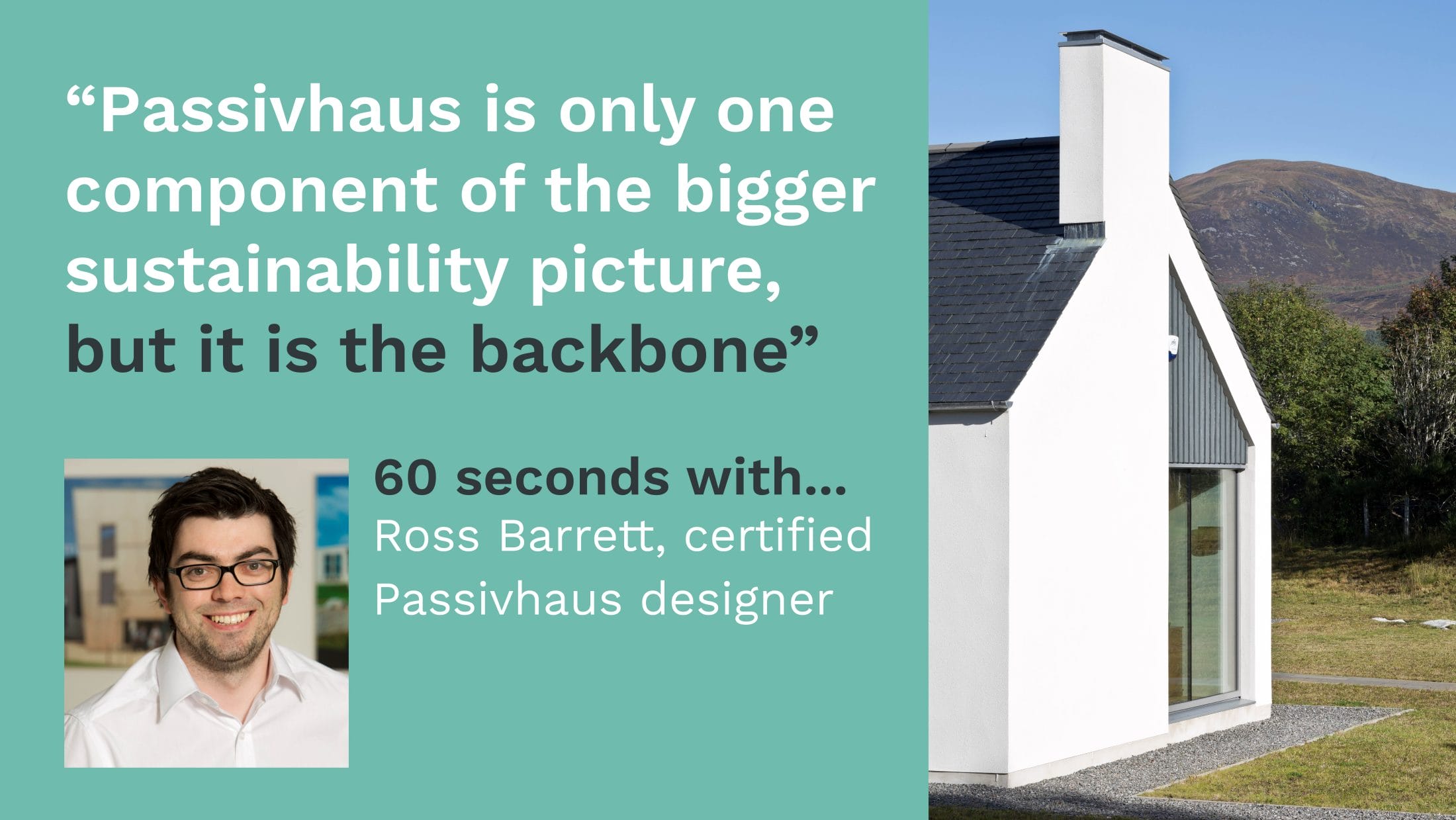
We are are committed to evolving our approach to design and development, and our team of certified Passivhaus House Designers is growing as the need for sustainable places is recognised more widely. Meet the team, and find out what inspired them to pursue the certification.
What initially interested you in becoming a certified Passivhaus designer?
We took part in a housing competition in 2007 in Scotland, and it was suggested to us as an idea for the competition – which we then won.
It was quite a new in the UK. We then did some presentations and spoke about it, which generated more interest. Firstly, we worked with external designers, and the second one we did in-house, giving us a good overview of the concept.
Have you always had an interest in Passivhaus design?
Since 2007, however my interest in sustainability and the environment has been since I started studying architecture.
Have you seen the demand for Passivhaus design grow over the last few years and if so, why do you think this has happened?
Yes, it has grown exponentially in the last 2-3 years. Firstly, the awareness of the climate emergency and how people decide to respond to it has grown. Secondly, people have started to adopt Passivhaus with a focus on the quality and comfort of living in these spaces – there is greater recognition of the range of benefits that Passivhaus design provides.
HLM Architects has a bold and ambitious aim of achieving RIBA’s Sustainable Outcomes 2030 targets on all projects by 2025. Why do you believe Passivhaus design is so important to delivering a more sustainable built environment?
It’s only one component of the bigger sustainability picture, but it is the backbone – getting the carbon use right down starts with reducing it initially.
What new skills/knowledge are you most looking forward to incorporating in new Passivhaus projects?
Applying the principles to larger projects, and working together with the other certified engineers to deliver high standard projects.
What knowledge gained from undertaking the Passivhaus qualification do you see benefitting projects the most?
I’m looking forward to being able to manage a project design myself in terms of the Passivhaus standard, rather than sub-consulting to another practice. It makes us more efficient overall as a practice.
Do you have a favourite Passivhaus building?
There’s so many good examples of different types across the world, it’s hard to choose one!
Do you have any other thoughts on Passivhaus as a concept, or its future?
If you compare where we are now to the first project, and the interest from people which is evident in terms of projects coming to fruition, it’s really encouraging. People liked the idea before, but weren’t willing to take the plunge; now, it is often mentioned by clients to us, as opposed to us initiating the conversation.


